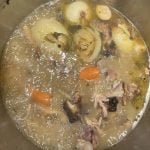Bob Bors is wondering how he can raise money to fund his coleus habit.
“I’m thinking fund raising because I get charged for greenhouse space,” said Bors, head of the fruit breeding and development program at the University of Saskatchewan. “There’s no source of funding for that. So it comes out of royalty money.”
“I’m usually known as the fruit breeder, but my actual description when I got hired here was, ‘must do research in horticulture.’ They needed the fruit course; the propagation course and they wanted me to do research in horticulture. So it didn’t matter what I did as long as I did research in horticulture,” he said.
Read Also

Rural emergency room closures continue to be vexing problem
Staffing issues are at the root of disruptions and closures in hospital emergency departments, both in rural and urban Canadian locations.
Well known for his sour cherry research, Bors is using the unusual fast-growing ornamental plant as a teaching tool for his students.
“If you have a fast growing plant like a tomato or coleus, it’s really easy for them to see them grow during the semester. If I did a fruit plant in the greenhouse in the winter, well they’d be bored …,” he said.
In the greenhouse class, students learn by growing plants in different fertilizers and soils. By propagating and raising seedlings, Bors and his students have created different coleus plants than seen anywhere else.
Bors took advantage of the fact that certain coleus plants don’t make pollen to create variation by using other plants. Coleus can be started and showy within a month, he said.
“Every generation, the leaves have become more and more bizarre, although I can’t see how they would get more bizarre than they are now.”
Bors considers the texture and colour attributes he likes the best for his next generation of coleus.
He is also busy inventing terms for his flowery creations like “buttons, because they have little round things.” Some look like coral, lichens, broccoli or leather.
“Sometimes it’s the naming that’s so important to the success of a plant.”
Bors said fruit breeding is mechanical and measurable but propagating coleus includes many unknowns.
His coleus roots were first planted during his Catholic elementary school days in his native Maryland, where nuns had coleus rooting in windowsills in the classrooms.
In trying to market his bizarre looking plants, Bors learned he had to go international to market coleus back in Canada. Domestic greenhouses don’t stock the plants over the winter and they would rather buy internationally from places like the Bahamas that export cuttings in the spring.
After posting photos on the web, three international companies arrived to see the plants. Most recently, Bors had visitors from Japan.
He said these companies will pay a royalty between three and four cents a plant.
“No one in plant sciences gets any royalty for plant breeding but 65 percent of it would come to my program,” he said, noting how that money could be used to hire staff.
“I could build the program, or spend it on other things. Probably some of my royalties from cherries funded the coleus. Maybe the coleus will fund something else.”
A recent coleus fundraising effort with Saskatoon’s Persephone Theatre during its run of Little Shop of Horrors raised money for the theatre school and the university’s plant sciences summer employment program.
Bors is now cultivating fund-raising ideas for Christmas markets that would see coleus take on the traditional poinsettias.
“It’s partly artist, part marketer, but then I guess that’s just like commercial art,” he said of cultivating coleus plants. “You’re trying to make something artistically interesting but also you want to sell it.”
















